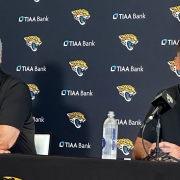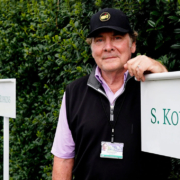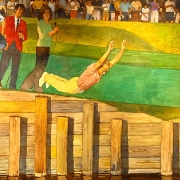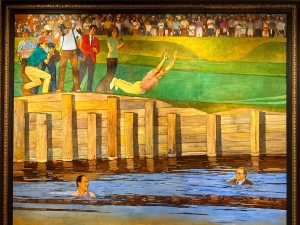Jaguars Draft Talent, Culture
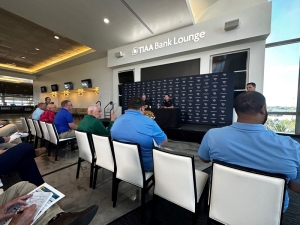 It has been a while since the Jaguars went into the roster building phase of the year without a question mark at quarterback. Last year doesn’t count, since 2021 was such a detour from potential success with Urban Meyer in charge. Yes, we knew Trevor Lawrence was going to be the quarterback, but we didn’t know he’d be able to blossom in his second year once Doug Pederson was named the head coach. Meyer almost ruined Lawrence. Only Trevor’s talent and willingness to learn got him through that year. There were plenty of head scratching discussions about his future before Pederson took over.
It has been a while since the Jaguars went into the roster building phase of the year without a question mark at quarterback. Last year doesn’t count, since 2021 was such a detour from potential success with Urban Meyer in charge. Yes, we knew Trevor Lawrence was going to be the quarterback, but we didn’t know he’d be able to blossom in his second year once Doug Pederson was named the head coach. Meyer almost ruined Lawrence. Only Trevor’s talent and willingness to learn got him through that year. There were plenty of head scratching discussions about his future before Pederson took over.
Whether it’s a Gatorade commercial with a bunch of kids or sitting next to Giannis Antetokounmpo and Chloe Kim in a Breitling Watch magazine add, Lawrence is the first Jaguars quarterback in a while who has the talent and the marketability to truly be the face of the franchise on a national scale. The last Jaguars QB I saw in a magazine was Mark Brunell. And that was the cover of TV Guide in 1995. Yep, TV Guide.
So, when you’re set at the quarterback position, it sure makes building a roster around him a different kind of exercise for the personnel and coaching staffs. Free agency and the draft have the same urgency, except you’re looking to build, not reinvent your team. A franchise quarterback lets them find the other pieces to the puzzle that will help the QB be a winner. Look at what they did in Denver for John Elway, in Kansas City for Patrick Mahomes, in Indianapolis for Peyton Manning and in Dallas for Troy Aikman. In each case, they knew who their quarterback was going to be for the next ten years. So, they went about building their team, in the short and long term, to be a sustainable winner around their star in the backfield.
“I think you’re always looking,” Jaguars General Manager Trent Baalke said last week at a pre-draft luncheon and press conference. “You look at today and tomorrow. I’m pretty fortunate to work with a guy that sees the vision of not only today, but as the future unfolds. We take that all into consideration.”
Baalke and Pederson are a solid match to build the franchise, both seeing what they need with the same vision. And it helps to have Lawrence as a constant.
When it comes to the draft, there’s a lot of communication between the coaching staff, the scouts, and the personnel department. You’d be surprised how many teams don’t have that kind of give and take when it comes to taking a player.
“If there’s a discrepancy, we’re going to talk about that,” Pederson chimed in. “We might even go to the tape and watch more film on a player or bring in the position coach, or bring in the scout that looked at this guy and just exhaust everything we can and make sure we’re in agreement that when we pick a player, we’re on the same page.”
Baalke revealed there are about 127 players on the Jaguars draft board and the Jaguars will lean on how they have those players ranked and the value they put on them to make decisions.
“There’s going to be enough depth in the draft that there’s going to be a player at a need position we have valued in that area that will be there when we pick,” he explained.
And that includes the first round. With a quarterback heavy top of the draft, that’ pushes other position players down the board. Quarterbacks are always valued, so picking at 24th in the first round, they’re confident a player they really like will be there.
“It’s too hard to play all of the scenarios in your mind. You go through it all then the draft happens and three picks into it all of your work is shot. I think you’re better off seeing the board, trusting the board, the value is set then letting it unfold,” Baalke said.
In fact, the Jaguars GM admitted that picking at 24, there might be two or three players they like who have been “pushed down” to their spot and they’ll take one of them. Trading down is always an option, but the Jaguars don’t think they’ll have to this year. Somebody they really like will be there.
I asked Baalke if there was a “best player” in this draft. It’s a question I ask every year, knowing they’re not going to give me an answer. Baalke said, “That’s a loaded question.”
“That’s what they pay me for,” I responded, kind of snarky I admit.
“Well, they don’t pay me to answer those,” Baalke continued. And then said, “But I think there is a best talent in this draft, yes I do.”
I’ll try and ask that question again after the draft is over. I’ve gotten great “off the record” answers in the past. “Orlando Pace,” was the quick answer one year. “Not even close.” And he was right. Pace went onto a Hall of Fame career.
“The guy we got,” was the answer the year the Jaguars drafted Blaine Gabbert with the 10th pick overall. That didn’t pan out so either the respondent was lying, which wouldn’t be unusual, or he actually thought that after seeing Gabbert on tape and working out. It’s certainly possible they thought Gabbert was the best player in the draft that year. When you watched him practice you wondered, “How do we ever lose?” But he couldn’t transfer that performance to the stadium under the lights.
One thing the Jaguars have restored under Pederson is a culture that can breed winning. You can tell walking in the locker room that these guys like each other, work hard for each other and want to win. Pederson recognizes that and is always looking for not only talent, but a player that will be a good “fit.”
“I take that responsibility back to the players,” Pederson explained. “I don’t want to micromanage the locker room whatsoever. If we sign a guy who’s not a good culture fit, our locker room can handle that. We did that a couple of times (in Philadelphia), and the locker room just handled it.”
“Our scouts do an outstanding job of spending time with player and family members and coaches, anybody we can talk to, to get answers on players,” he continued. “So, we feel like the ones that are on the board are all great fits for us. Our locker room can absorb that, and they either buy in, or they won’t be here.”

